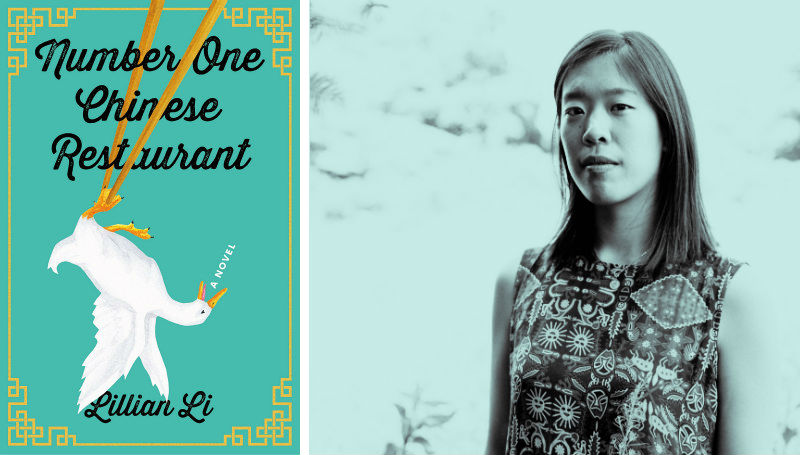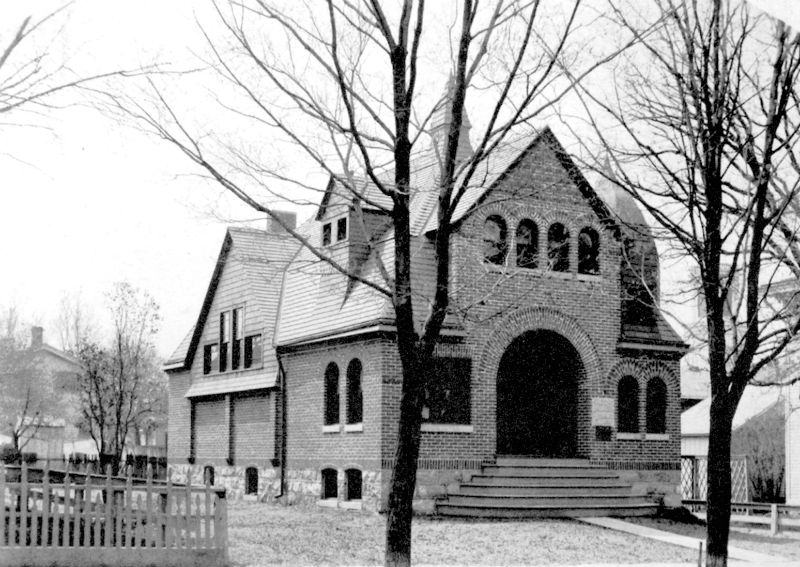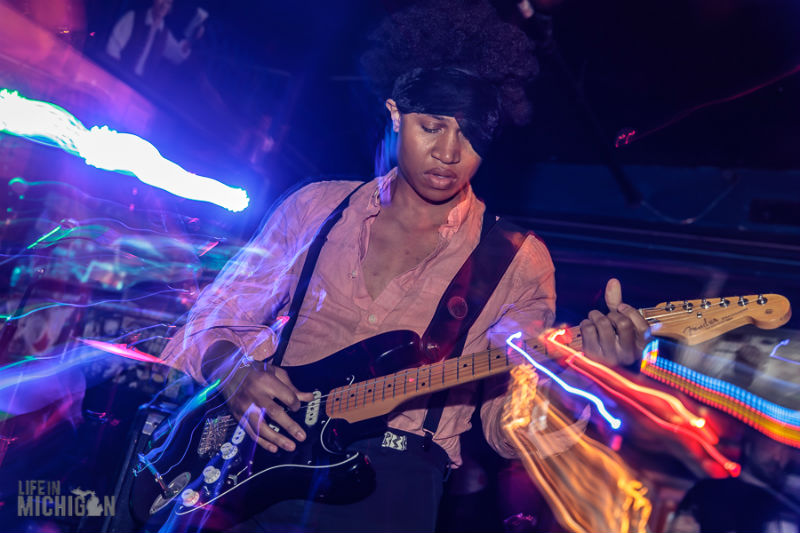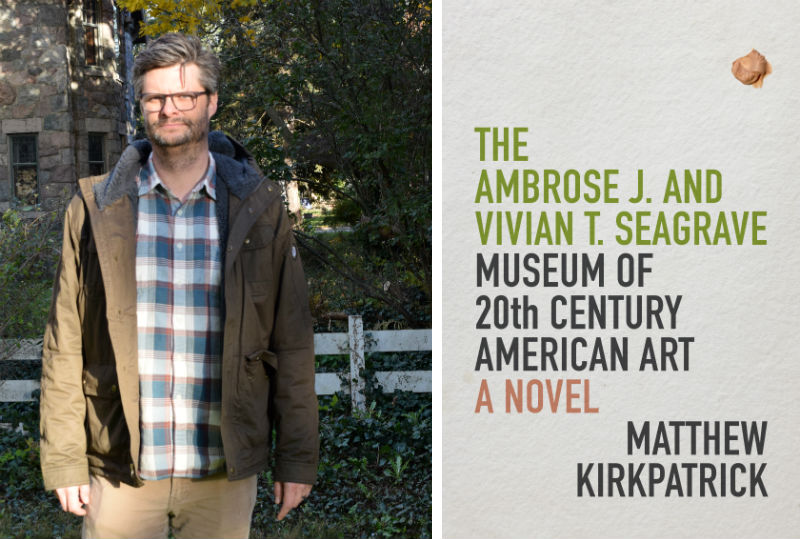A2 author Lillian Li explores relationships, context, and proximity in her debut novel

This story was originally published on September 12, 2018.
How do obligations and desires compete in our lives?
Three generations of characters, family, and friends grapple with those two often opposing components in Number One Chinese Restaurant, the debut novel by Lillian Li.
Li presents a broad cast, ranging from restaurant staff to the family members who own the Beijing Duck House. In fact, the family tree -- or rather the map of characters -- is on the inside cover of the book, which proves quite useful when reading. (You can have your book signed by Li at Nicola’s Books on September 20 at 7 pm.)
The Ann Arbor-based Li teaches at the University of Michigan and works at Literati Bookstore. She earned her MFA from the University of Michigan and is originally from the D.C. metro area.
Distilling the Process: Ann Arbor creatives R.J. Fox and Heidi Philipsen are working to bring "Love & Vodka" to the big screen

This story was originally published on April 25, 2019.
R.J. Fox doesn’t wait around for something to happen -- the Ann Arbor author goes out and creates his own opportunities.
Filmmaker Heidi Philipsen likewise makes things happen for herself. So perhaps it is kismet that these two talented and hardworking artists found each other and are making art together as they turn Fox’s book Love & Vodka into an independent film.
Fox knew he wanted to be involved in filmmaking since he was in high school, and he currently teaches English and video production at Huron High School. “Everyone tells you that the odds are stacked against you, that it’s like making it to the NBA … so you have to have a mindset that you will find a way and get your work in the right hands of someone who wants to make your movie.”
Fox knew he found that person when he met Philipsen.
Well-Read: A brief history of A2 libraries from the book "Vanishing Ann Arbor"

The following is an excerpt from the book "Vanishing Ann Arbor" by Patti Smith and Britain Woodman.
Just three years after Allen and Rumsey founded our fair city in 1824, a group called the Ann Arbor Library Association began meeting. This was not a public library as we know it; it relied upon the dues paid by patrons. Using the dues it collected, the association purchased 100 books by 1830.
Around the same time, the Ann Arbor Circulating Library sprang up at the office of the Western Emigrant (the first newspaper in Ann Arbor). Dues were $2.50 per year and were mainly used to purchase reference books. The following decade produced another Ann Arbor Library Association and the Working Men’s Library Association. Like that very first group, these were not funded by taxes but by private dues and donations. However, government-sponsored public libraries were coming soon.
In 1843, the state school superintendent decreed that all school districts had to set up their own libraries, earmark at least $25 for the collections, and share the books with local townships. Since these were to be public, non-dues-paying organizations, the state government announced two years later that various collected fines by local government units would go to the libraries. (The only exception was in cases where the monies were instead needed for the local poorhouse.)
All the Small Things: Rick Bailey's essay collection "The Enjoy Agenda" is a humorous and touching look at some of life's little moments

With warm and inviting prose, Rick Bailey takes us through life's hilarious and melancholy moments in The Enjoy Agenda: At Home and Abroad.
“Part of the pleasure in writing these essays is capturing moments that go flying by and would otherwise be forgotten," says Bailey. "Every moment is potentially reverberant. In the essay 'iSmell,' after a not particularly successful home repair event, the scent of WD40 on my fingertips causes me to remember my first experiences wearing cologne in seventh or eighth grade, and then to recall the smell of Dow Chemical in Midland, Michigan, and tobacco in Durham, North Carolina, where I spent some time in graduate school, leading to some thoughts on possibilities of digitized smell and the chemistry of smell in outer space. Reverberance is cool.”
These sorts of memories resonate through this charming book which includes stories of Bailey’s recruitment to a high school wrestling team, attempts to use mindfulness as a way to control blood-pressure results, and a long path to find just the right kind of milk.
A Night of Fiction: Bookbound Bookstore hosts Elizabeth Ellen, Juliet Escoria, and Mary Miller

While other towns struggle to maintain bookstores and aren’t able to host author events, Ann Arbor hosts myriad events featuring the writers behind the pages.
Bookbound Bookstore is hosting a night of fiction on July 10. But what isn't fictional is Ann Arbor's dedication to independent bookstores and author events.
“We are very lucky to be in a city with so many avid readers and folks who make an effort to shop local," says Bookbound co-owner Megan Blackshear. "Each local bookstore has their own areas of specialty and programming, so we complement one another to provide something for everyone. After the loss of Borders, Shaman Drum, and plenty of other great shops, we are grateful that Ann Arbor is proving that it is still Booktown.”
Bookbound's triple bill of celebrated authors on Wednesday evening features Elizabeth Ellen, Juliet Escoria, and Mary Miller.
Pulp Bits: A Roundup of Washtenaw County Arts & Culture Stories, Songs & Videos

A round-up of arts and culture stories featuring people, places, and things in Washtenaw County, whether they're just passing through or Townies for life. Coverage includes music, visual art, film & video, theater & dance, written word, and Pulp life (food, fairs, and more). If you're reading this in the future and a story link is dead, look up the URL on web.archive.org; we've cached every post there.
This is a music-crazy post. We have 28 links to various new albums, singles, videos, interviews, and more. Plus, several Ann Arbor Art Fair previews and stories about Washtenaw Dairy turning 85.
A Brief History of "Hawking": The latest science graphic novel by Ann Arbor's Jim Ottaviani profiles the legendary theoretical physicist

The subject of the book was a scientist who was also a New York Times bestselling author and affiliated with a renowned university. And the writer of this book ... was also a scientist, a New York Times bestselling author, and affiliated with a renowned university. It's only fitting that Jim Ottaviani -- preeminent writer of science comics, former nuclear engineer, and current librarian at the University of Michigan -- wrote a book about Stephen Hawking, the preeminent theoretical physicist and cosmologist.
Illustrated by Leland Myrick, Hawking traces the legendary scientist's life, from his groundbreaking work in theoretical physics to his best-selling book A Brief History of Time to his advocacy for rights for people with disabilities.
To familiarize themselves with the source material, Ottaviani and Myrick combed through pages and pages of notes and references, dozens of books, and numerous print, audio, and video interviews. “We also spent a fair amount of time at Cambridge,” Ottaviani adds. “We visited Hawking’s offices, his environment … talked to his friends and coworkers” to get the best possible picture of the late scientist.
Museum exhibit labels tell the stories of an eccentric curator and visitor in Matthew Kirkpatrick's new novel

The Ambrose J. and Vivian T. Seagrave Museum of 20th Century American Art by Matthew Kirkpatrick is a novel in the form of museum exhibit labels. The labels reveal the art pieces in the museum, along with the curator’s unique relationship and what has happened to the Seagrave family’s daughter. In between the labels, occasional passages narrate a visitor’s exploration of and discoveries in the museum.
Kirkpatrick teaches creative writing at Eastern Michigan University and previously studied at the University of Utah for his Ph.D. He also wrote a story collection, Light Without Heat, and a novella, The Exiles.
On Monday, July 1, at 7 pm, Kirkpatrick reads at Literati Bookstore with Joe Sacksteder (see related interview). The two authors met at EMU, and both received their Ph.D. at the University of Utah, though at different times. Pulp interviewed Kirkpatrick about his interest in museums, his new book, and what projects he’s working on next.
Psychological dramas and fragmented stories in Joe Sacksteder's "Make/Shift" push against form and content conventions

A contestant in a game show where people are eliminated if they get aroused. Parents and kids enduring an overnight trip for hockey. A man in grief who sees letters in the sealant on the road. An international student and her hall counselor coming to understand each other’s perspectives.
Each of these characters, among others, navigate the shifting situations of the short stories and flash vignettes of Make/Shift, the new collection by Joe Sacksteder.
Sacksteder studied and taught at Eastern Michigan University. He was a visiting instructor at Interlochen Center for the Arts and now serves as Director of Creative Writing there.
On Monday, July 1, at 7 pm, Sacksteder returns to town to read at Literati Bookstore with Matt Kirkpatrick (see related interview). The two authors met at EMU, and both received their Ph.D. at the University of Utah, though at different times. Pulp interviewed Sacksteder about his connection to Ypsilanti, writing, and upcoming projects.
Susan Jane Gilman set "Donna Has Left the Building" partly in Michigan "as a valentine to being here"

Being a culinary ambassador for cookware. Acting as a dominatrix. Facing search and seizure laws in Tennessee. Helping the refugee crisis in Greece.
These are all things that author Susan Jane Gilman had to have known or learned about to include in her new novel, Donna Has Left the Building, said fellow author Polly Rosenwaike in conversation with her at Literati Bookstore on Thursday, June 6. There, Gilman shared stories from her life and research that led to writing about these situations in her book. Within these experiences, Gilman’s characters may be flawed and behave badly, but they also display tenderness and sympathy, added Rosenwaike.
As a writer, “You want to have empathy for all characters,” Gilman said. “I’m all of them.”
This novel has strong ties to Michigan. Gilman wrote Donna Has Left the Building “as a valentine to being here” in southeastern Michigan at the University of Michigan for her MFA and then teaching at U-M and Eastern Michigan University. Gilman, who grew up in the Upper West Side of Manhattan, found the Midwest to be a big contrast to the way she observed that people seemed to be constantly performing in New York.


































